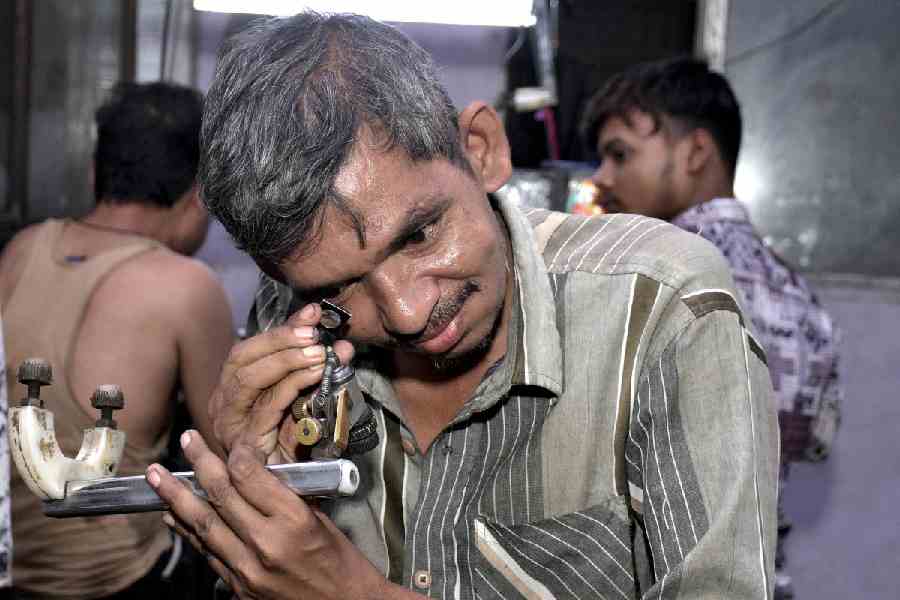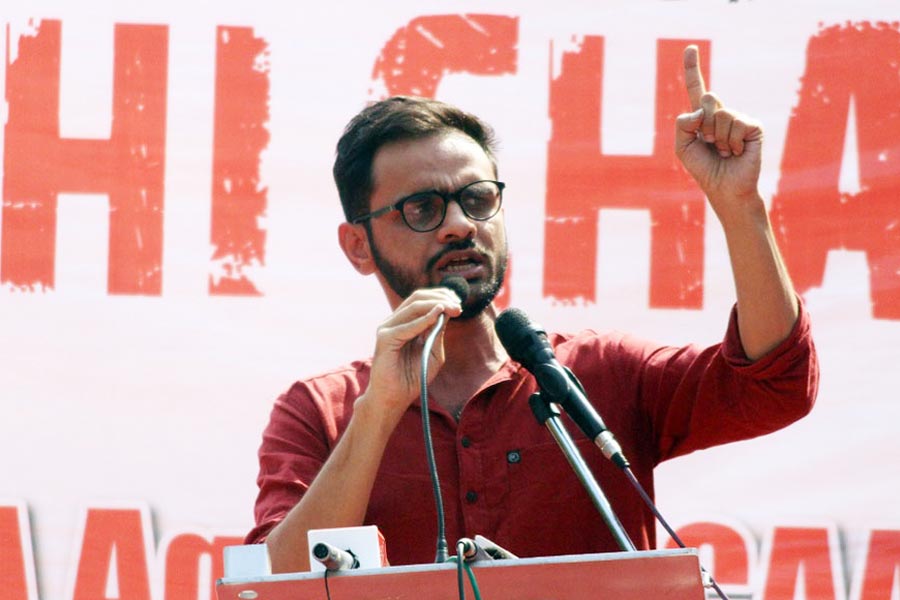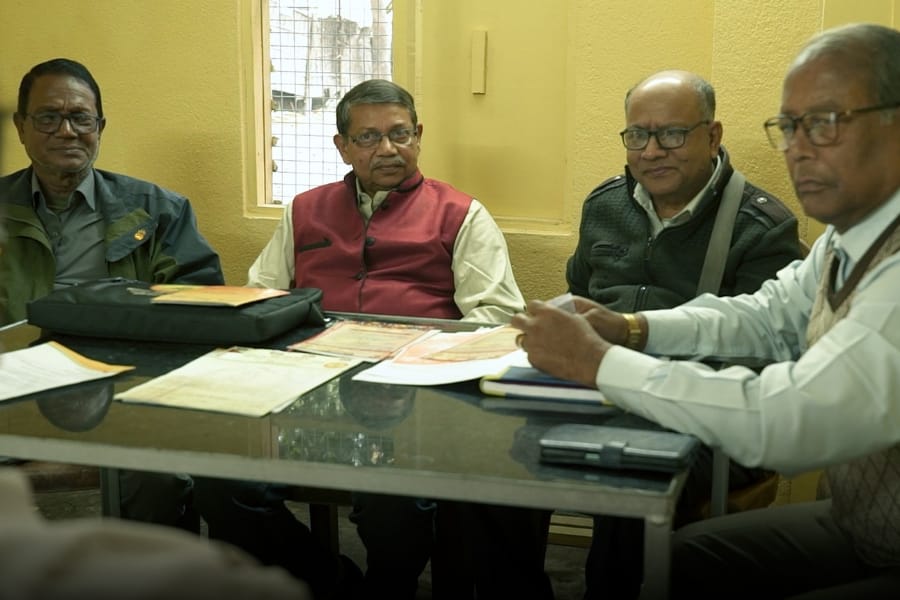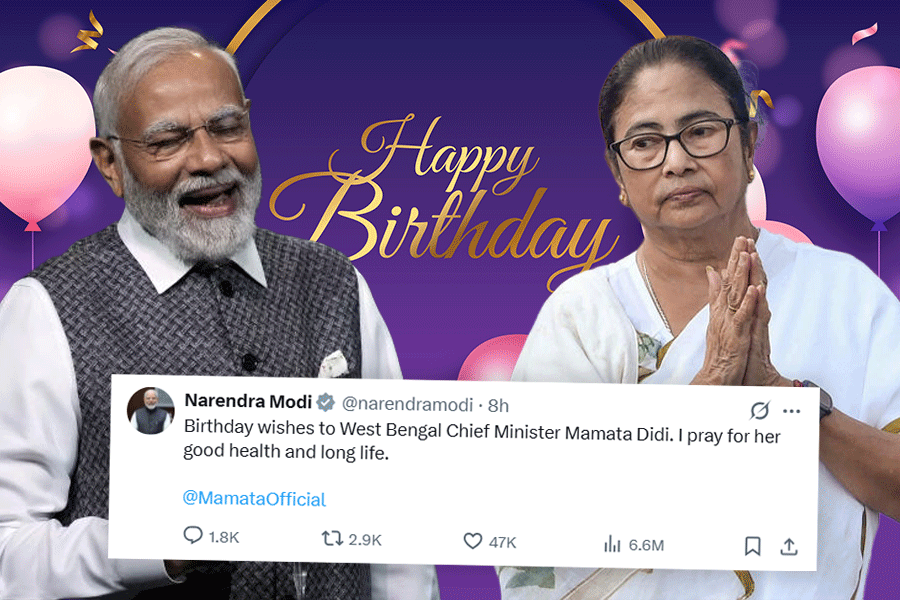Donald Trump’s weaponisation of tariffs has further eclipsed the sparkle of the “diamond capital” of India.
Dinesh Tank of Gujarat’s Junagadh, who struggles to earn ₹18,000 a month as a diamond polisher to feed a family of five, hopes that the US President reverses his decision to impose a 25 per cent additional tariff on imports from India, taking the total rate to a punishing 50 per cent.
The additional duty will come into effect from August 27.
Until a year ago, Tank, 44, used to employ 20 diamond workers.
“I had to shut shop because of the impact of the Russia-Ukraine war on the diamond industry. We were not getting orders. There was no way I could continue to support the 20 workers. I took up the job myself,” he told The Telegraph.
He gets orders from Surat, which processes around 90 per cent of the diamonds from all over the world.
Tank’s fears are not unfounded.
Kirit Bhansali, chairman of the Gems & Jewellery Export Promotion Council (GJEPC), told this reporter that an estimated 1.5-2 lakh diamond workers could lose their jobs if the 25 per cent additional tariff was not rolled back.
Sources said Indian exporters had already shipped polished diamonds and jewellery to the US, and most of them were expected to reach there before the additional duty kicked in. The buyers and suppliers will share the increased tariff in case of shipments that fail to make it to the US before August 27, sources added.
Bhansali said Gujarat chief minister Bhupendra Patel and minister of state for home Harsh Sanghavi had promised to help diamond workers if the additional tariff was not reversed.
In the meantime, the diamond industry is grappling with reduced orders, and several units have ground to a halt. The wait-and-watch situation is expected to continue till clarity is reached on the final tariff.
The US accounts for nearly one-third of India’s annual gems and jewellery
shipments.
According to reports, India’s exports of cut and polished diamonds fell to a near 20-year low in 2024-25 as demand from key markets such as the US and China
weakened sharply.
The additional US tariff on Indian goods gives an advantage to countries like Israel, whose tariff rate stands at 19 per cent.
In 2024, India accounted for 68 per cent by volume and 42 per cent by value ($5.79 billion) of the total diamond imports by the US, according to the GJEPC.
Exports of cut and polished diamonds from India to the US have nearly halved over the past three years, falling from $9.86 billion in 2021-22 to $4.81 billion in 2024-25.
Bhansali said countries such as Turkey, Vietnam, Thailand and Dubai faced lower US tariffs of 15-20 per cent, making Indian diamonds less competitive.
Trump’s decision comes at a time the diamond industry in Surat is yet to recover from the pandemic-time losses.
Surat, also called the “diamond capital”, employs an estimated 7.50 lakh to 10 lakh workers in around 5,000 units. Several units have closed down in the last couple
of years.
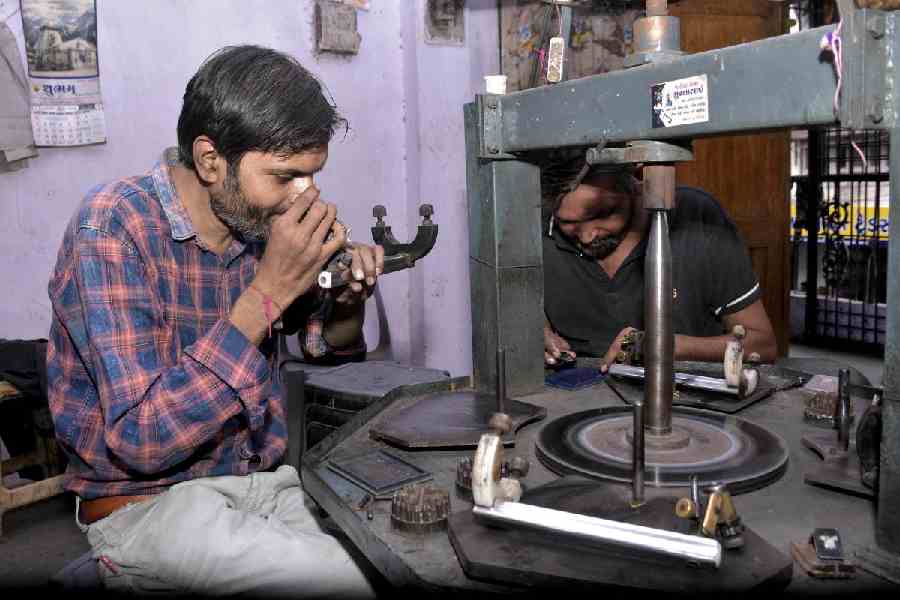
Surat: Craftsmen work on a diamond at a manufacturing unit, in Surat, Gujarat, Friday, Aug. 8, 2025.
The diamond workers have long been demanding a financial package that would take care of their children’s education. The state government has announced a survey before taking a decision.
According to Bhavesh Tank, vice-president of the Diamond Workers’ Union, financial crisis had driven over 80 diamond polishers to suicide in the last one and a half years.
“However, this will not be on record. The FIR will mention that the deceased was a diamond worker. But the real reason does not come out,” he said.
Many workers have become jobless, but no one is keeping a count, he said, adding that many had switched to other jobs.
Bhavesh Tank said the situation would not improve unless pressure was built from multiple quarters and India’s foreign policy was changed.
Lalji Patel, a diamantaire and social activist, said the industry had never faced such a crisis in his 50-year career.
“The slowdown in the diamond industry has also plunged the Surat Diamond Bourse (SDB) into a crisis,” said Patel, who is also the vice-chairman of the SDB.
Dinesh Navadiya, chairman of the Indian Diamond Institute, hoped that the Surat diamond industry would emerge stronger on the other side of the crisis, just like it always has.

